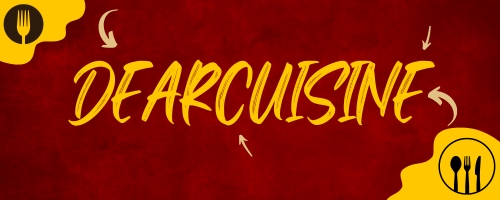The sustainability points meals and beverage manufacturers and producers face are multifaceted and interconnected and span the whole lot of worldwide meals provide chains, from the sourcing and origination of uncooked supplies and packaging selections to downstream logistics and disposal.
Tackling these issues alone is unlikely to result in vital headway.  Moderately, meals and beverage manufacturers ought to search inspiration and innovation past their organisation. By collaborating with gear suppliers, provide chain companions, retailers, and even competitor manufacturers, firms can set widespread sustainability targets, pool assets, and make a much more vital impression than they may individually.
Moderately, meals and beverage manufacturers ought to search inspiration and innovation past their organisation. By collaborating with gear suppliers, provide chain companions, retailers, and even competitor manufacturers, firms can set widespread sustainability targets, pool assets, and make a much more vital impression than they may individually.
As Rachael Satchwell, International Meals Sector Supervisor, Domino Printing Sciences, highlights, a collaborative strategy amplifies potential progress and evokes and motivates everybody concerned to innovate for a greater future.
Sustainable design
Working in direction of a round financial system is essential to world sustainability. This implies embracing a meals and beverage manufacturing and consumption mannequin that goals to cut back waste whereas maintaining assets in use. It entails making certain that uncooked supplies are sourced responsibly and selecting and designing product packaging that protects towards meals waste whereas supporting manufacturers, retailers, and customers in end-of-life recyclability.
As a part of their efforts, producers could take into account incorporating environmentally pleasant, moral, and various (e.g., plant-based) uncooked supplies in product design and manufacturing. They could additionally have a look at bettering a product’s power effectivity to cut back price and waste throughout manufacturing – designing product packaging for reuse and recycling.
Deciding on a packaging materials will contain some standards, together with ease of recyclability, reuse, or compostability; general packaging weight; and power and water use. For instance, whereas a glass bottle could seem to be the extra ‘sustainable’ resolution for drinks owing to the convenience of recyclability, the general enhance in product weight in comparison with PET can simply result in a spike in carbon emissions from transport downstream if logistics nonetheless depend on carbon-based power.
It’s exactly this complexity and interdependency that any adjustments to merchandise must be thought-about alongside the potential secondary results they could have – to make sure that merchandise can nonetheless be successfully managed on manufacturing traces, together with product dealing with, packaging, coding, and marking – in order that adjustments don’t have a detrimental impression on sustainability additional downstream.
Whereas talking to different companies, and even competitor manufacturers, about potential design and growth alternatives, might sound counterintuitive from a enterprise perspective, by working collectively, manufacturers can pool assets, apply affect up and down the availability chain, and guarantee any new initiatives are complementary quite than detrimental within the wider market.
Collaborating with manufacturing suppliers and different companies from the broader provide chain can be important. The problem is much larger than one organisation alone can assume duty for. As such, it’s straightforward for particular person firms to suggest adjustments, for instance, to product packaging design, that will have unexpected detrimental impacts if supplies recycling services can’t adequately deal with them. Collaborating with different trusted companions from throughout the broader provide chain will help to develop options which are really sustainable whereas avoiding potential pitfalls.
Mitigating manufacturing waste
The UK’s Waste and Useful resource Motion Programme estimates that 16% of all meals waste happens through the manufacturing course of – with human error and manufacturing line inefficiencies, together with handbook product changeovers, rising as a number of the main drivers behind these losses.
When human error causes points through the manufacturing course of, the best-case state of affairs is that merchandise have to be repackaged; the worst case is that extremely perishable gadgets, comparable to dairy merchandise, will likely be written off as meals waste.
Meals and beverage producers ought to collaborate carefully with their equipment suppliers to determine areas the place waste might be mitigated and implement options to make sure that power, time, and funds are spent creating the utmost potential variety of high-quality, sellable merchandise. In spite of everything, improved effectivity equals larger sustainability.
Automation, machine integration, and vision-based high quality management are key methods for figuring out and resolving points linked to human error and handbook processing and, by extension, lowering waste.
Lastly, producers can mitigate manufacturing waste by implementing real-time machine efficiency monitoring options. Sensors and cloud-based options may be customised to detect drops in efficiency, sending alerts that facilitate swift intervention earlier than a line stops or packaging degradation results in merchandise being unfit for distribution, sale, or shopper consumption.
Sustainability in provide chain chains
Environmentally accountable manufacturing doesn’t finish with manufacturing. Provide chain optimisation is key to sustainability in manufacturing. To advertise this, manufacturers ought to search to collaborate with upstream and downstream provide chain companions and arrange programs to extend transparency and share extra knowledge.
During times of excessive demand or when confronted with inventory shortages and delays, elevated visibility will help producers precisely forecast lead instances, management inventory necessities, and handle buyer expectations.
Together with variable product knowledge, comparable to batch and product info, embedded inside scannable 2D codes facilitates larger visibility inside provide chains. Larger visibility permits for extra correct inventory management. It makes sources of errors or leakage simpler to hint so manufacturers can optimise their operations, enhance resilience, and scale back the danger of meals waste.
Information sharing will likely be essential for compliance with rules just like the Company Sustainability Reporting Directive (CSRD), requiring producers to trace and report their full carbon footprint, together with Scope 3 carbon emissions, additional highlighting the necessary function of collaboration in assembly trade requirements and creating environmentally sustainable options.
Conclusion
The pathway to a extra sustainable, environmentally accountable future for meals and beverage manufacturing would require world dedication and cooperation.
For producers, the perfect strategy will contain collaboration with like-minded organisations and constructing partnerships with suppliers who will help implement sustainable practices at each stage of the manufacturing and provide chain course of.
This holistic strategy is not going to solely profit the setting however will even assist manufacturers to cut back prices, enhance buyer satisfaction, and improve model fame.
For additional info on Domino
Please go to www.domino-printing.com



